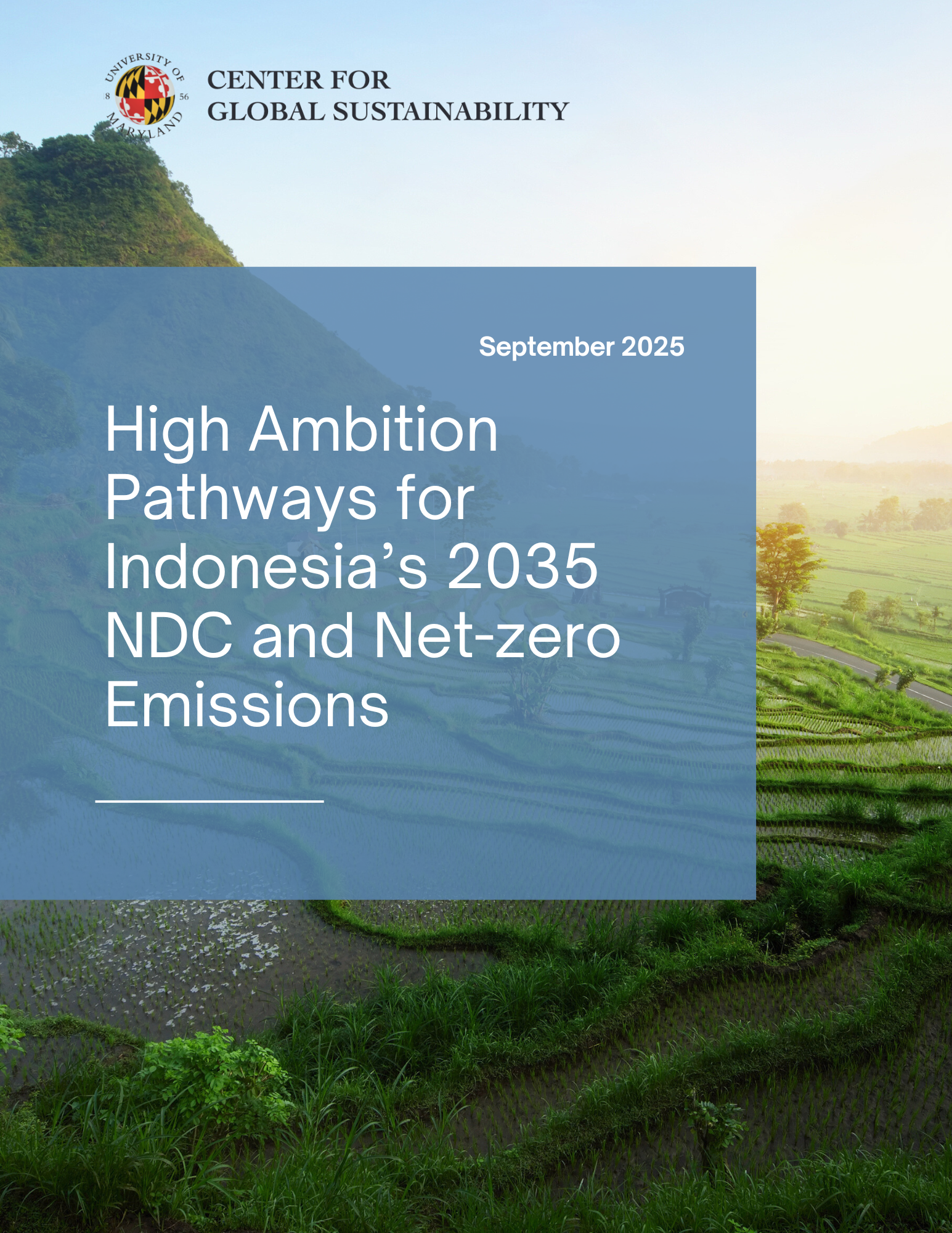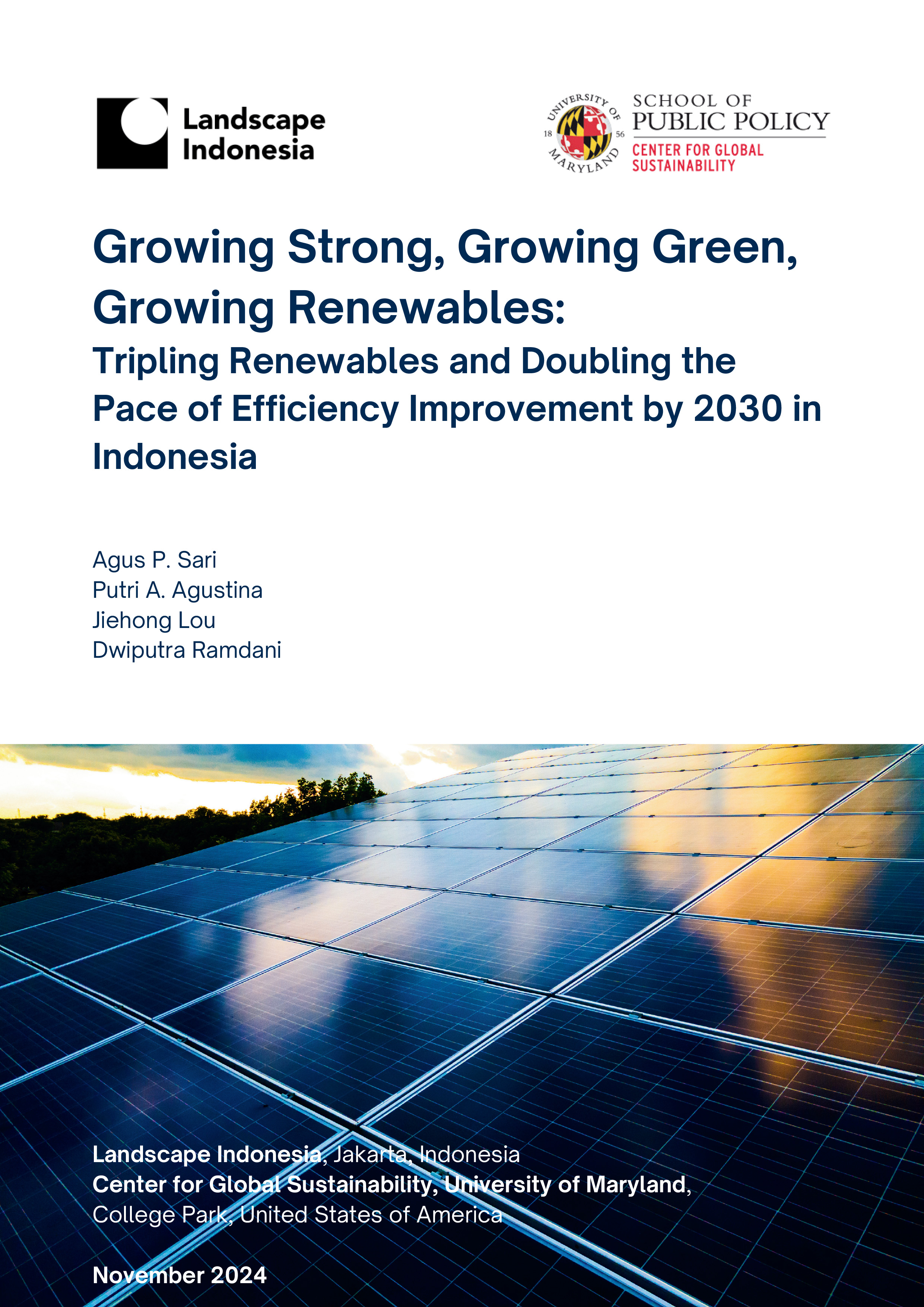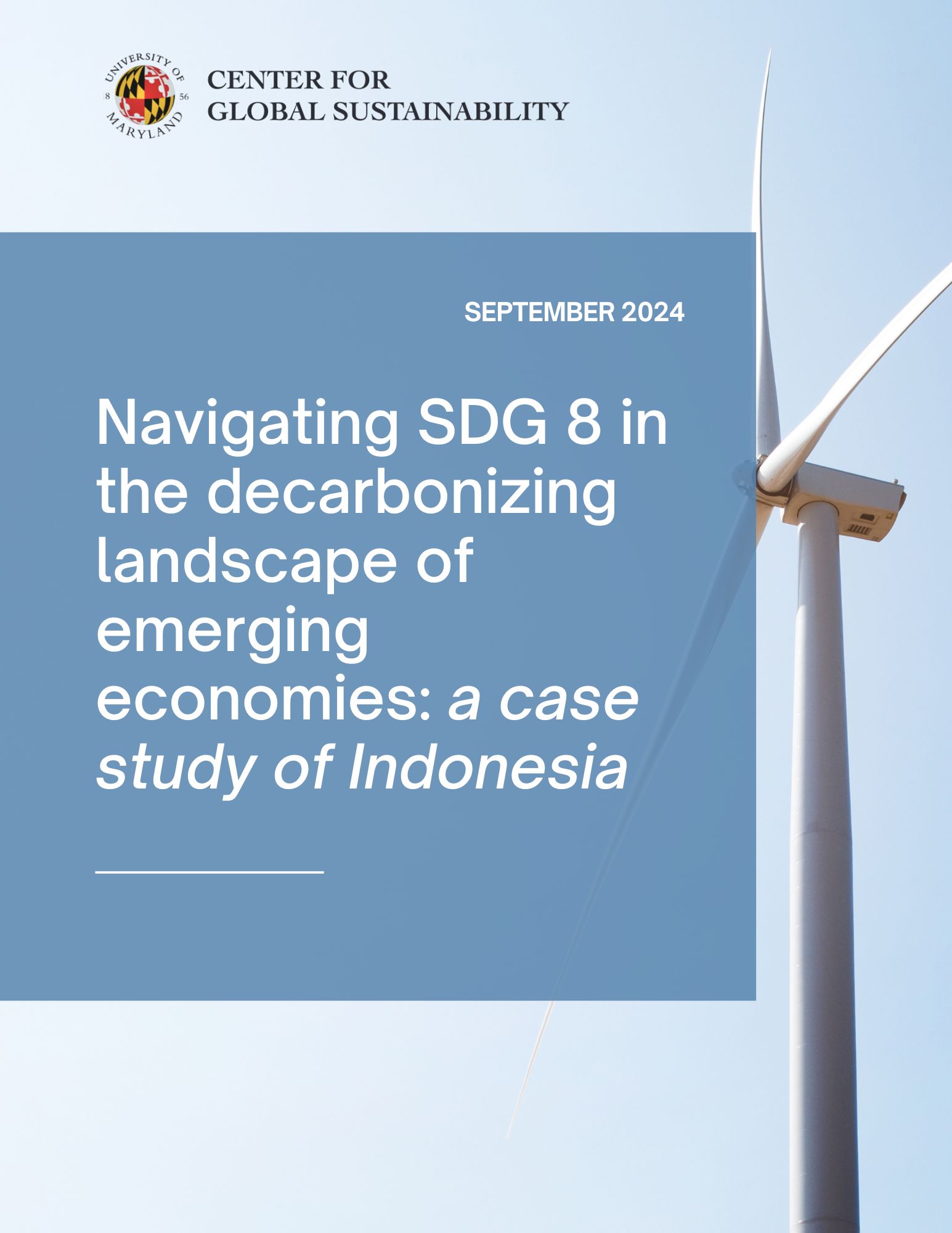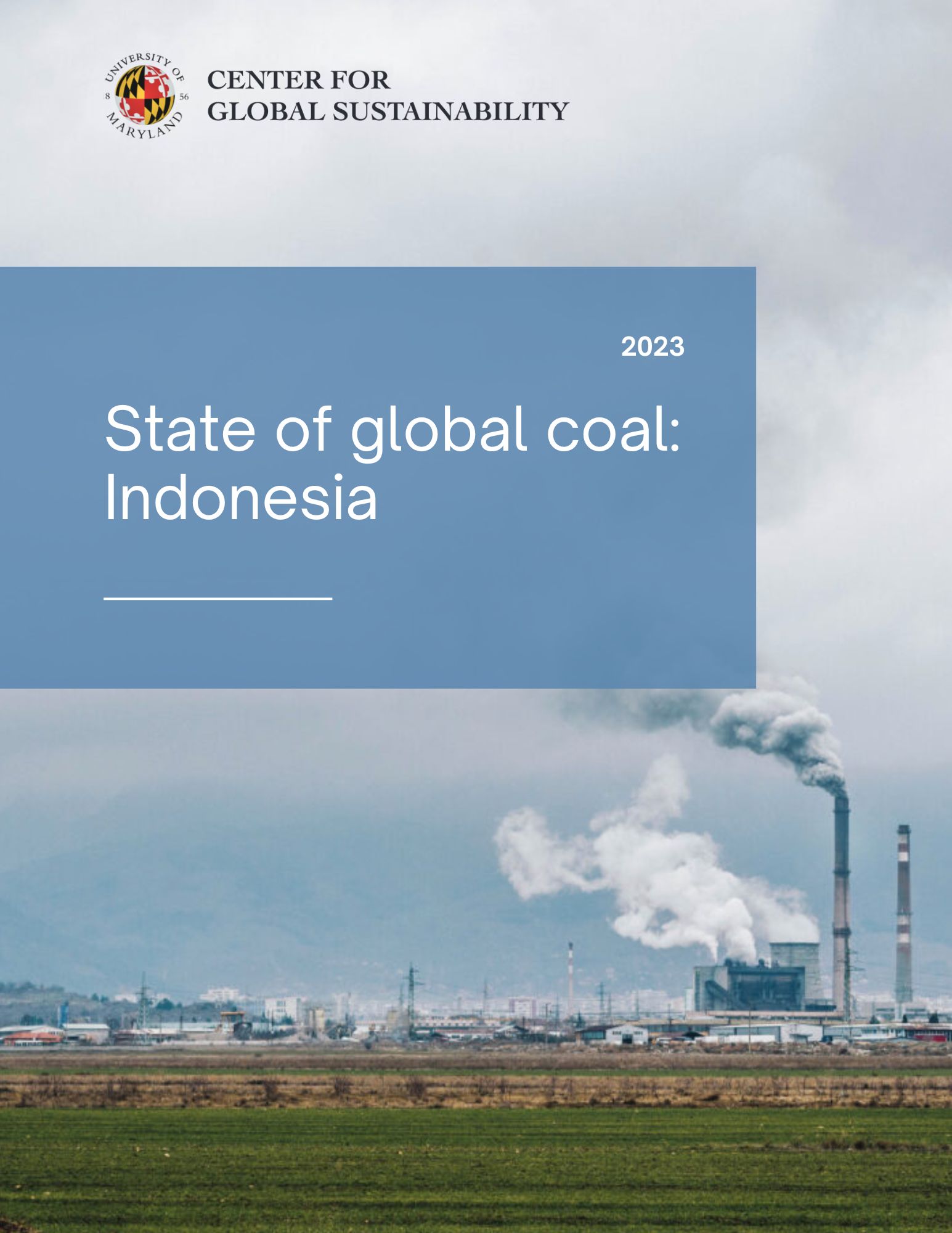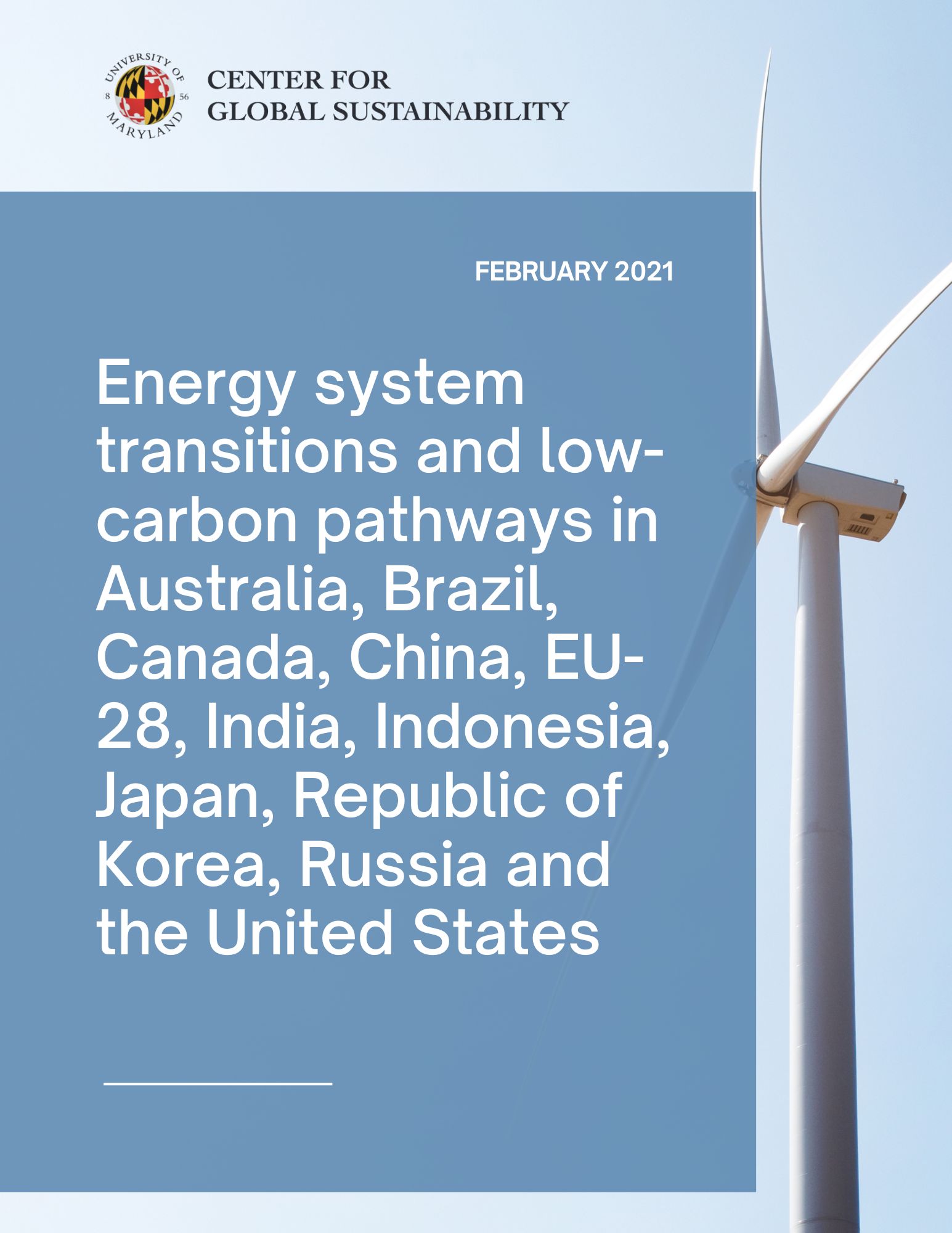Our High Ambition pathway for Indonesia shows a 45-49% reduction in total greenhouse gas (GHG) emissions (including Land Use, Land Use Change and Forestry (LULUCF)) by 2035 from 2023 levels. For its 2nd Nationally Determined Contribution (NDC), Indonesia aims to peak emissions by 2030 and commits to an absolute GHG emissions range of 1,258-1,489 MtCO₂e (including LULUCF) by 2035.2 While the 2nd NDC also includes updated targets for 2030, suggesting enhanced ambition compared to the 1st NDC —which targeted a 32% unconditional (or 43% conditional) reduction from business-as-usual (BAU) levels by 20301— the overall ambition of the new 2030 and 2035 targets is low. Indonesia’s 2nd NDC applies a significant change in the base year’s (2019) land sector emissions compared to the 2024 national inventory, and shows even greater reliance on a highly uncertain land sink for near-term reductions than the previous NDC. It targets a net land sink by 2025 while allowing continued rapid growth of energy and other non-land emissions from 2023 levels. Indonesia also commits to achieving net-zero emissions by 2060.1 The CGS High Ambition pathway achieves deeper and more balanced emissions reductions across all sectors by 2035, exceeding the targets set in the 2030 and 2035 NDCs.
Indonesia's emissions, including LULUCF, increased by 69% from 2010 to 2023, but have remained fairly constant since 2022.3,4 As of 2022, emissions stem primarily from LULUCF CO2 (26%), followed by methane (19%) and the power sector CO2(18%).3,5 To achieve the High Ambition 2035 target, key mitigation strategies include: canceling pre-construction captive coal plants; accelerating solar and wind deployment and onsite renewable substitution, particularly in nickel industrial parks; achieving a net-zero land sink before 2035; expanding waste collection services to all cities and villages; and restricting underground coal mining.
2035 Target: Total GHG Emissions Reductions
via CGS High Ambition Pathways
-45 to -49%
Relative to Estimated Peak Year
2025ᵇ
Official 2035 NDC target
+10 to +30 %ᶠ
Official 2030 NDC target
−31.89 to −43.2 %ᵈ
Net zero target
2060
A High Ambition 2035 target for Indonesia shows a 45-49% emission reduction from the 2023 level, including LULUCF, or a 15-19% reduction excluding LULUCF (Figure 1). The High Ambition transition for Indonesia involves immediate CO2 reductions (excluding LULUCF) starting after 2025, achieving a net-zero land sink before 2035, and a significant methane reduction of 33% from modeled 2020 to 2035. Total GHG emissions are expected to decline by 25-29% by 2030 and by 45-49% by 2035 from 2023 levels.
Indonesia’s 2nd NDC targets an absolute GHG emissions range of 1,258-1,489 MtCO₂e by 2035 (including LULUCF), indicating a 10-24% reduction by 2035 from 2023 levels. The detailed sectoral projections reflect that, as with the 1st NDC, the 2nd NDC relies heavily on the land sector for near-term emissions reductions, with a projected net land sink by 2025, while allowing continued rapid growth of energy and other non-land emissions from 2019 levels. Given the latest trends, the assumed 2025 net land sink is highly unlikely to be achieved, and the continued rapid growth in energy emissions, which are projected to increase by 64-89% by 2030 and 69-104% by 2035 from 2019 levels, indicates a very low ambition.
Under our High Ambition pathway, emissions reductions are driven not just by a land use sink, but across all sectors. Energy emissions decline by 28% from 2022 to 2035, driven by power sector reductions (46%), which is critical for the near-term, while limiting emissions growth in the industry and transportation sectors to enable an earlier and lower peak. Waste sector emissions decline by 46% over the same period, while agricultural emissions, primarily non-CO2 gases, decrease by 4%. A net-zero land sink is achieved by 2035, rather than by 2030 as proposed in the NDC.7
Indonesia’s electricity generation is dominated by fossil fuels, with 62% of total generation from coal and 18% from gas.6 Renewables account for 19% of total generation, with wind and solar contributing less than 1% (Figure 2).6 By the end of 2023, total installed solar and wind capacity had only reached 0.78 GW (0.63 GW solar and 0.15 GW wind). Coal capacity continues to grow, driven by the expansion of captive coal power plants used by the industrial sector. In 2023, captive coal accounted for 22% of the total installed coal capacity. Planned coal projects include 8.6 GW under construction (3.9 GW on-grid and 4.7 GW captive plants), and 4.9 GW at pre-construction stages (all captive). The pre-construction pipeline of captive plants has nearly doubled since the end of 2023.9 After 2030, when the 4.7 GW of projects currently under construction come online, captive coal is expected to make up 25% of total installed coal capacity.
Under the High Ambition scenario, 74% of Indonesia’s electricity generation mix comes from renewables by 2035, with accelerated solar and wind buildout, adopted bio-mass co-firing, and reduced coal generation by 2035. Specifically, power sector transitions under the High Ambition pathway include:
- Increasing the share of wind and solar generation from less than 1% in 2023 to 55% in 2035 by adding 398 GW of new capacity (33 GW/year), supported by stronger financial incentives and streamlined regulations.
- Reducing the share of coal generation from 62% in 2023 to below 15% by 2035, through a combination of lower plant utilization, biomass co-firing at eligible plants, and targeted retirement of low-hanging fruit plants.
- Enhancing grid infrastructure to support the replacement of captive plants with on-grid generation amid growing demand.
When comparing the High Ambition scenario with Indonesia’s Just Energy Transition Partnership (JETP) Comprehensive Investment and Policy Plan (CIPP),8 the latter is less ambitious overall — maintaining a higher share of fossil fuel generation through 2035 (34% vs. 26% in the High Ambition scenario). On-grid electricity demand projections are similar in both scenarios, with average annual growth of 6% from 2023 to 2035, up from 2% per year in recent years. However, the CIPP estimates a higher share of coal generation (26% by 2035) compared to 14% in the High Ambition pathway, while the share of gas remains similar (8–9%). The CIPP includes more deployment of geothermal, hydro, and biomass, whereas the High Ambition scenario emphasizes solar and wind. Combined, solar and wind reach 55% of total generation by 2035 compared to 28% under the CIPP. Additionally, the CIPP introduces nuclear power starting in 2035 which is not included in the High Ambition scenario.
Indonesia is the world’s largest coal exporter, and over two-thirds of its coal production is exported.11 The coal industry provides significant export revenue and supports energy-intensive production such as nickel processing. However, the heavy reliance on coal poses significant risks amid shifting global demand. Indonesia also remains a net importer of oil, challenging the country’s energy and economic security. Under our High Ambition pathway for Indonesia, domestic coal demand declines by 37% by 2030 and 47% by 2035 from the 2024 level, while gas demand falls by 8% and 5%, and oil demand increases by 2% and 3%, respectively (Figure 3). To facilitate the energy transition, the government has introduced biodiesel blending mandates, moving from B35 (35%) to B40 (40%) in 2024 and aiming for B50 (50%) by 2060,12 or even as soon as 2026.13 However, the emphasis on palm oil production in the country’s energy transition strategy (biofuels are projected to contribute 46% of the total transportation energy sources by 2050)14 raises concerns about the sustainability of the policy.
Citations
- Republic of Indonesia. Enhanced Nationally Determined Contribution. (2022).
- Republic of Indonesia. Second Nationally Determined Contribution. (2025).
- Gütschow, J., Pflüger, M. & Busch, D. The PRIMAP-hist national historical emissions time series (1750-2023) v2.6.1. Zenodo
https://doi.org/10.5281/zenodo.15016289 (2025). - Friedlingstein, P. et al. Global Carbon Budget 2023. Earth System Science Data 15, 5301–5369 (2023).
- Hoesly, R. et al. CEDS v_2025_03_18 Gridded Data 0.5 degree. Zenodo (2025).
- Ember. Electricity Data Explorer - Open Source Global Electricity Data. Ember (2025).
- Cui, Yiyun ‘Ryna’ et al. High Ambition Pathways for Indonesia’s 2035 NDC and Net-Zero Emissions.
https://cgs.umd.edu/sites/default/files/2025-09/Indonesia%20paper-v6.pdf (2025). - JETP Indonesia. The Comprehensive Investment and Policy Plan (CIPP) for Indonesia’s Just Energy Transition Partnership (JETP). JETP Indonesia
https://jetp-id.org/cipp (2023). - Global Energy Monitor. Global Coal Plant Tracker. Global Energy Monitor
https://globalenergymonitor.org/projects/global-coal-plant-tracker/ (2024). - KPMG & Kearney. Statistical Review of World Energy, 73rd Edition. Energy Insitute
https://www.energyinst.org/statistical-review/resources-and-data-downloads (2024). - IEA. Indonesia - Countries & Regions. IEA
https://www.iea.org/countries/indonesia/energy-mix (2024). - Government of Indonesia. Presidential Regulation (PERPRES) No. 40 of 2023 ‘Acceleration of National Sugar Self-Sufficiency and Provision of Bioethanol as Biofuel’. Database Peraturan | JDIH BPK
http://peraturan.bpk.go.id/Details/251973/perpres-no-40-tahun-2023 (2023). - Karyza, D. Government still set for 2026 B50 biodiesel target, but rules out January kickoff. The Jakarta Post (2025).
- Rahmanulloh, A. USDA Biofuels Annual Report: Indonesia.
https://apps.fas.usda.gov/newgainapi/api/Report/DownloadReportByFileName?fileName=Biofuels%20Annual_Jakarta_Indonesia_ID2023-0018.pdf (2023).
Our Work

